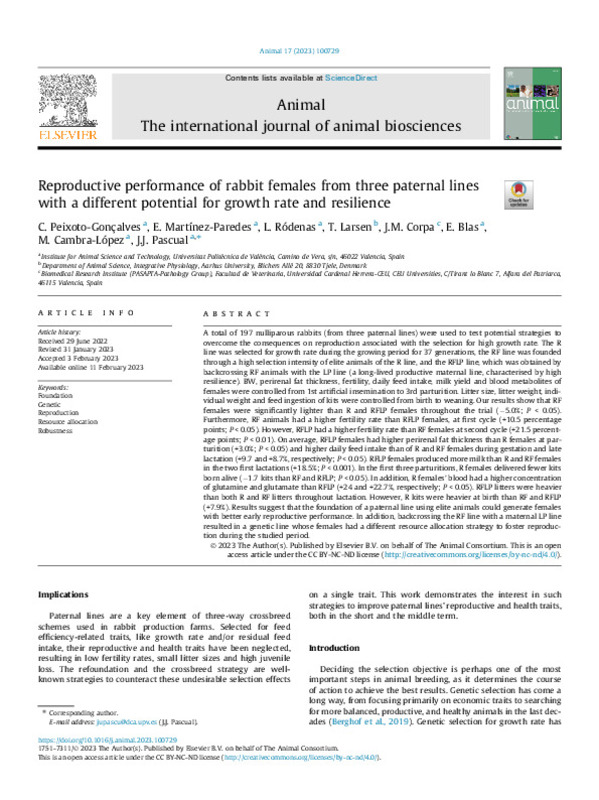JavaScript is disabled for your browser. Some features of this site may not work without it.
Buscar en RiuNet
Listar
Mi cuenta
Estadísticas
Ayuda RiuNet
Admin. UPV
Reproductive performance of rabbit females from three paternal lines with a different potential for growth rate and resilience
Mostrar el registro completo del ítem
Peixoto Gonçalves, CA.; Martinez-Paredes, E.; Ródenas Martínez, L.; Larsen, T.; Corpa, J.; Blas Ferrer, E.; Cambra López, M.... (2023). Reproductive performance of rabbit females from three paternal lines with a different potential for growth rate and resilience. Animal. 17(6):1-10. https://doi.org/10.1016/j.animal.2023.100729
Por favor, use este identificador para citar o enlazar este ítem: http://hdl.handle.net/10251/201129
Ficheros en el ítem
Metadatos del ítem
| Título: | Reproductive performance of rabbit females from three paternal lines with a different potential for growth rate and resilience | |
| Autor: | Larsen, T. Corpa, J.M. | |
| Entidad UPV: |
|
|
| Fecha difusión: |
|
|
| Resumen: |
[EN] A total of 197 nulliparous rabbits (from three paternal lines) were used to test potential strategies to overcome the consequences on reproduction associated with the selection for high growth rate. The R line was ...[+]
|
|
| Palabras clave: |
|
|
| Derechos de uso: | Reconocimiento - No comercial - Sin obra derivada (by-nc-nd) | |
| Fuente: |
|
|
| DOI: |
|
|
| Editorial: |
|
|
| Versión del editor: | https://doi.org/10.1016/j.animal.2023.100729 | |
| Código del Proyecto: |
|
|
| Agradecimientos: |
Financial support statement This study was funded by the Ministry of Science, Innovation and Universities of the Government of Spain (AGL2017-85162-C2-1-R) and the General Direction of Science and Research of the Generalitat ...[+]
|
|
| Tipo: |
|









